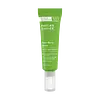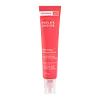What's inside
What's inside
 Key Ingredients
Key Ingredients

 Benefits
Benefits

 Concerns
Concerns

No concerns
 Ingredients Side-by-side
Ingredients Side-by-side

Water
Skin ConditioningGlycerin
HumectantCoco-Caprylate
EmollientButylene Glycol
HumectantPropanediol
SolventGlyceryl Stearate
EmollientEmblica Officinalis Fruit Extract
Skin ConditioningEuterpe Oleracea Fruit Extract
Vaccinium Macrocarpon Fruit Extract
AstringentVaccinium Myrtillus Fruit Extract
Skin ConditioningRubus Idaeus Fruit Extract
AstringentSambucus Nigra Fruit Extract
AstringentMalpighia Emarginata Fruit Extract
Skin ConditioningHippophae Rhamnoides Fruit Extract
Skin ConditioningSchisandra Chinensis Fruit Extract
Skin ConditioningRubus Chamaemorus Fruit Extract
AntioxidantLycium Barbarum Fruit Extract
AstringentPlinia Cauliflora Fruit Extract
Skin ConditioningFragaria Vesca Fruit Extract
AstringentMelia Azadirachta Flower Extract
Skin ConditioningMelia Azadirachta Leaf Extract
Skin ConditioningMyrciaria Dubia Fruit Extract
Skin ConditioningVitis Vinifera Seed Extract
AntimicrobialGlycyrrhiza Glabra Root Extract
BleachingSqualane
EmollientTetrahexyldecyl Ascorbate
AntioxidantTocopherol
AntioxidantAcetyl Tetrapeptide-9
Skin ConditioningAcetyl Tetrapeptide-11
Skin ConditioningPrunus Domestica Seed Oil
Skin ConditioningSesamum Indicum Seed Oil
EmollientLeuconostoc/Radish Root Ferment Filtrate
AntimicrobialCorallina Officinalis Extract
Skin ConditioningCoccinia Indica Fruit Extract
Skin ConditioningBrassica Campestris Seed Oil
Skin ConditioningXanthan Gum
EmulsifyingMannitol
HumectantPotassium Sorbate
PreservativeSodium Benzoate
MaskingPhenoxyethanol
PreservativeEthylhexylglycerin
Skin ConditioningWater, Glycerin, Coco-Caprylate, Butylene Glycol, Propanediol, Glyceryl Stearate, Emblica Officinalis Fruit Extract, Euterpe Oleracea Fruit Extract, Vaccinium Macrocarpon Fruit Extract, Vaccinium Myrtillus Fruit Extract, Rubus Idaeus Fruit Extract, Sambucus Nigra Fruit Extract, Malpighia Emarginata Fruit Extract, Hippophae Rhamnoides Fruit Extract, Schisandra Chinensis Fruit Extract, Rubus Chamaemorus Fruit Extract, Lycium Barbarum Fruit Extract, Plinia Cauliflora Fruit Extract, Fragaria Vesca Fruit Extract, Melia Azadirachta Flower Extract, Melia Azadirachta Leaf Extract, Myrciaria Dubia Fruit Extract, Vitis Vinifera Seed Extract, Glycyrrhiza Glabra Root Extract, Squalane, Tetrahexyldecyl Ascorbate, Tocopherol, Acetyl Tetrapeptide-9, Acetyl Tetrapeptide-11, Prunus Domestica Seed Oil, Sesamum Indicum Seed Oil, Leuconostoc/Radish Root Ferment Filtrate, Corallina Officinalis Extract, Coccinia Indica Fruit Extract, Brassica Campestris Seed Oil, Xanthan Gum, Mannitol, Potassium Sorbate, Sodium Benzoate, Phenoxyethanol, Ethylhexylglycerin
Water
Skin ConditioningGlycerin
HumectantButylene Glycol
HumectantCoco-Caprylate/Caprate
EmollientDecyl Oleate
EmollientCucumis Sativus Extract
Skin ConditioningArctostaphylos Uva-Ursi Leaf Extract
Skin ConditioningPropanediol
SolventGlutathione
Chondrus Crispus Extract
Skin ConditioningTetrahexyldecyl Ascorbate
AntioxidantVitis Vinifera Seed Extract
AntimicrobialUbiquinone
AntioxidantCurcumin
AntioxidantSilybum Marianum Fruit Extract
Skin ConditioningEpigallocatechin Gallate
AntioxidantAscophyllum Nodosum Extract
Skin ConditioningMoringa Oleifera Seed Oil
EmollientFucus Vesiculosus Extract
EmollientFicus Carica Fruit Extract
HumectantLeontopodium Alpinum Flower Extract
Skin ConditioningEmblica Officinalis Fruit Extract
Skin ConditioningButyrospermum Parkii Butter
Skin ConditioningLinoleic Acid
CleansingLinolenic Acid
CleansingPhytosphingosine Phosphate
Skin ConditioningThermus Thermophillus Ferment
Skin ConditioningTocopherol
AntioxidantSesamum Indicum Seed Oil
EmollientTocopheryl Acetate
AntioxidantLecithin
EmollientXanthan Gum
EmulsifyingAcacia Senegal Gum
MaskingEctoin
Skin ConditioningGlyceryl Stearate
EmollientPolyacrylamide
Cetearyl Alcohol
EmollientCaprylyl Glycol
EmollientC13-14 Isoparaffin
EmollientC12-15 Alkyl Benzoate
AntimicrobialPolysorbate 80
Emulsifying1,2-Hexanediol
Skin ConditioningLaureth-7
EmulsifyingDipropylene Glycol
HumectantPhenoxyethanol
PreservativeEthylhexylglycerin
Skin ConditioningWater, Glycerin, Butylene Glycol, Coco-Caprylate/Caprate, Decyl Oleate, Cucumis Sativus Extract, Arctostaphylos Uva-Ursi Leaf Extract, Propanediol, Glutathione, Chondrus Crispus Extract, Tetrahexyldecyl Ascorbate, Vitis Vinifera Seed Extract, Ubiquinone, Curcumin, Silybum Marianum Fruit Extract, Epigallocatechin Gallate, Ascophyllum Nodosum Extract, Moringa Oleifera Seed Oil, Fucus Vesiculosus Extract, Ficus Carica Fruit Extract, Leontopodium Alpinum Flower Extract, Emblica Officinalis Fruit Extract, Butyrospermum Parkii Butter, Linoleic Acid, Linolenic Acid, Phytosphingosine Phosphate, Thermus Thermophillus Ferment, Tocopherol, Sesamum Indicum Seed Oil, Tocopheryl Acetate, Lecithin, Xanthan Gum, Acacia Senegal Gum, Ectoin, Glyceryl Stearate, Polyacrylamide, Cetearyl Alcohol, Caprylyl Glycol, C13-14 Isoparaffin, C12-15 Alkyl Benzoate, Polysorbate 80, 1,2-Hexanediol, Laureth-7, Dipropylene Glycol, Phenoxyethanol, Ethylhexylglycerin
 Reviews
Reviews

Ingredients Explained
These ingredients are found in both products.
Ingredients higher up in an ingredient list are typically present in a larger amount.
Butylene Glycol (or BG) is used within cosmetic products for a few different reasons:
Overall, Butylene Glycol is a safe and well-rounded ingredient that works well with other ingredients.
Though this ingredient works well with most skin types, some people with sensitive skin may experience a reaction such as allergic rashes, closed comedones, or itchiness.
Learn more about Butylene GlycolWe don't have a description for Emblica Officinalis Fruit Extract yet.
Ethylhexylglycerin (we can't pronounce this either) is commonly used as a preservative and skin softener. It is derived from glyceryl.
You might see Ethylhexylglycerin often paired with other preservatives such as phenoxyethanol. Ethylhexylglycerin has been found to increase the effectiveness of these other preservatives.
Glycerin is already naturally found in your skin. It helps moisturize and protect your skin.
A study from 2016 found glycerin to be more effective as a humectant than AHAs and hyaluronic acid.
As a humectant, it helps the skin stay hydrated by pulling moisture to your skin. The low molecular weight of glycerin allows it to pull moisture into the deeper layers of your skin.
Hydrated skin improves your skin barrier; Your skin barrier helps protect against irritants and bacteria.
Glycerin has also been found to have antimicrobial and antiviral properties. Due to these properties, glycerin is often used in wound and burn treatments.
In cosmetics, glycerin is usually derived from plants such as soybean or palm. However, it can also be sourced from animals, such as tallow or animal fat.
This ingredient is organic, colorless, odorless, and non-toxic.
Glycerin is the name for this ingredient in American English. British English uses Glycerol/Glycerine.
Learn more about GlycerinGlyceryl Stearate is a mix of glycerin and stearic acid.
It is used to stabilize the mixing of water and oil ingredients. By preventing these ingredients from separating, it can help elongate shelf life. It can also help thicken the product's texture.
As an emollient, it helps soften skin and supports barrier-replenishing ingredients.
In cosmetics, Glyceryl Stearate is often made from vegetable oils or synthetically produced.
This ingredient may not be fungal-acne safe
Fun fact: The human body also creates Glyceryl Stearate naturally.
Learn more about Glyceryl StearatePhenoxyethanol is a preservative that has germicide, antimicrobial, and aromatic properties. Studies show that phenoxyethanol can prevent microbial growth. By itself, it has a scent that is similar to that of a rose.
It's often used in formulations along with Caprylyl Glycol to preserve the shelf life of products.
Propanediol is an all-star ingredient. It softens, hydrates, and smooths the skin.
It’s often used to:
Propanediol is not likely to cause sensitivity and considered safe to use. It is derived from corn or petroleum with a clear color and no scent.
Learn more about PropanediolSesame oil comes from sesame seeds. Sesame oil is rich in fatty acids and Vitamin E.
It has antibacterial, antioxidant, and anti-inflammatory properties. The phenolic compounds of this ingredient (including vitamin E) give it these properties.
Unrefined sesame oil has a comedogenic rating of 3, while refined sesame oil has a rating of 1. This ingredient may not be fungal-acne safe.
The fatty acids in sesame oil include linoleic acid (41%), oleic acid (39%), palmitic acid (8%), stearic acid (5%), and some small traces of others.
Learn more about Sesamum Indicum Seed OilTetrahexyldecyl Ascorbate (THD) is a stable and oil-soluble form of Vitamin C.
THD is special in that it has the ability to travel deeper into skin than traditional ascorbic acid while maintaining the same skin benefits (double win!).
Because it’s oil-soluble, THD dives deep into your skin’s fatty layers (think ceramides and cholesterol) to fight off the kind of free radicals that mess with your skin barrier. This makes it a great pair with water-based vitamin C (ascorbic acid) that mainly works on the surface.
Even at just 0.1%, THD is already showing great antioxidant activity. When used up to 2%, it helps keep your skin happy and calm, especially when it’s stressed from pollution or sun.
Want to fade dark spots or tackle hyperpigmentation? You’ll want 5% or more. Pairing it with brightening buddies like niacinamide or licorice root gives even better results. One study even used 30% THD with other brighteners and saw real results on stubborn discoloration, even in melasma-prone skin.
A note on THD: It’s has a slightly silky, oily texture and usually shows up colorless or pale yellow (though the exact shade can vary by supplier).
While you can sneak it into water-based formulas, it really shines when paired with silicones or oils, which help your skin soak it up better.
THD is pretty stable, but it’s still vulnerable to degradation like ascorbic acid. Too much light or heat (above 113°F / 45°C) can break it down over time. Go for dark and opaque packaging that keeps it safe and shady!
Read more about other types of Vitamin C:
Learn more about Tetrahexyldecyl AscorbateTocopherol (also known as Vitamin E) is a common antioxidant used to help protect the skin from free-radicals and strengthen the skin barrier. It's also fat soluble - this means our skin is great at absorbing it.
Vitamin E also helps keep your natural skin lipids healthy. Your lipid skin barrier naturally consists of lipids, ceramides, and fatty acids. Vitamin E offers extra protection for your skin’s lipid barrier, keeping your skin healthy and nourished.
Another benefit is a bit of UV protection. Vitamin E helps reduce the damage caused by UVB rays. (It should not replace your sunscreen). Combining it with Vitamin C can decrease sunburned cells and hyperpigmentation after UV exposure.
You might have noticed Vitamin E + C often paired together. This is because it is great at stabilizing Vitamin C. Using the two together helps increase the effectiveness of both ingredients.
There are often claims that Vitamin E can reduce/prevent scarring, but these claims haven't been confirmed by scientific research.
Learn more about TocopherolVitis Vinifera Seed Extract comes from the grape vine. Grape seeds are a byproduct of creating grape juice or wine.
The components of grape seeds have many skin benefits. Research has found it to be antimicrobial and anti-inflammatory. It also contains many potent antioxidants such as Vitamin E , Vitamin C, proanthocyanidins, polyphenols, flavonoids, and anthocyanins. Proanthocyanidin has been shown to help even out skin tone.
Antioxidants help fight free-radical molecules. Free-radical molecules are capable of damaging our cells and other genetic material. Antioxidants help stabilize free-radicals by donating extra electrons. Grape seed extract may help reduce the signs of aging.
The antimicrobial properties of grape seed may help treat acne. However, more research is needed to support this claim.
Grape seed has also been found to help absorb UV rays. Grape seed extract should not replace your sunscreen.
Learn more about Vitis Vinifera Seed ExtractWater. It's the most common cosmetic ingredient of all. You'll usually see it at the top of ingredient lists, meaning that it makes up the largest part of the product.
So why is it so popular? Water most often acts as a solvent - this means that it helps dissolve other ingredients into the formulation.
You'll also recognize water as that liquid we all need to stay alive. If you see this, drink a glass of water. Stay hydrated!
Learn more about WaterXanthan gum is used as a stabilizer and thickener within cosmetic products. It helps give products a sticky, thick feeling - preventing them from being too runny.
On the technical side of things, xanthan gum is a polysaccharide - a combination consisting of multiple sugar molecules bonded together.
Xanthan gum is a pretty common and great ingredient. It is a natural, non-toxic, non-irritating ingredient that is also commonly used in food products.
Learn more about Xanthan Gum